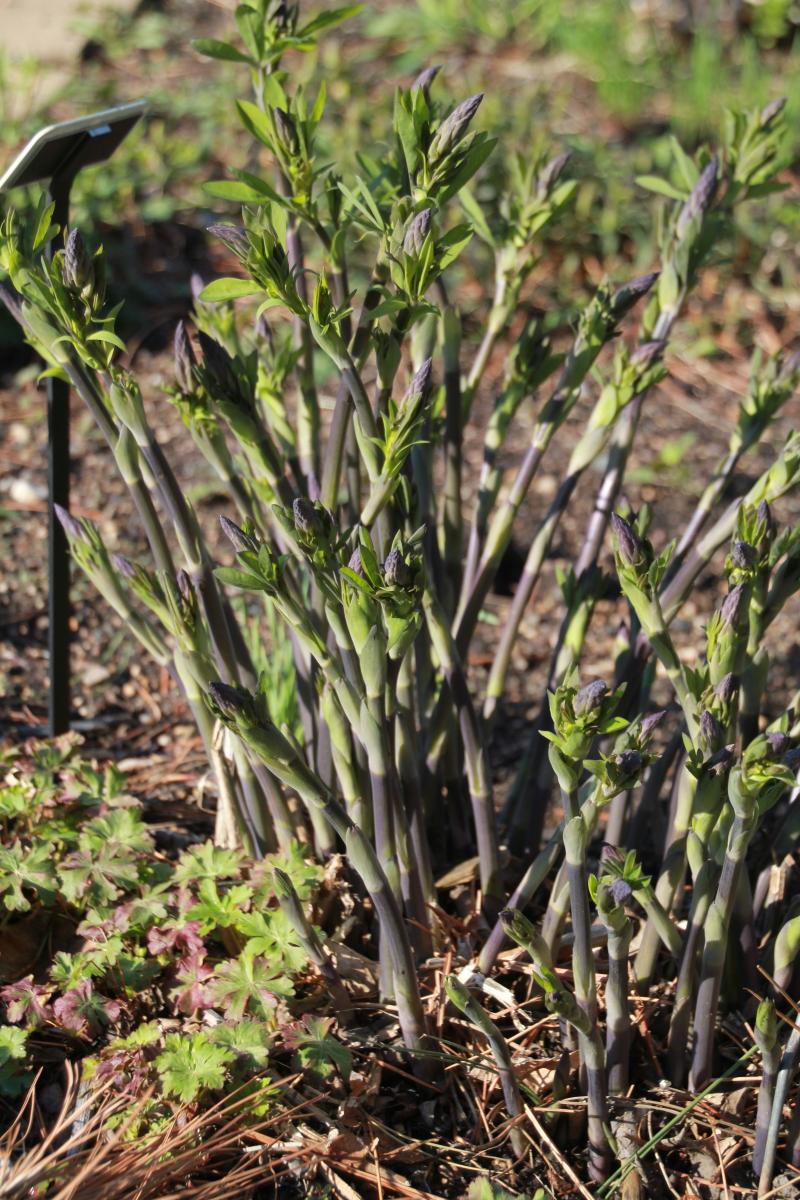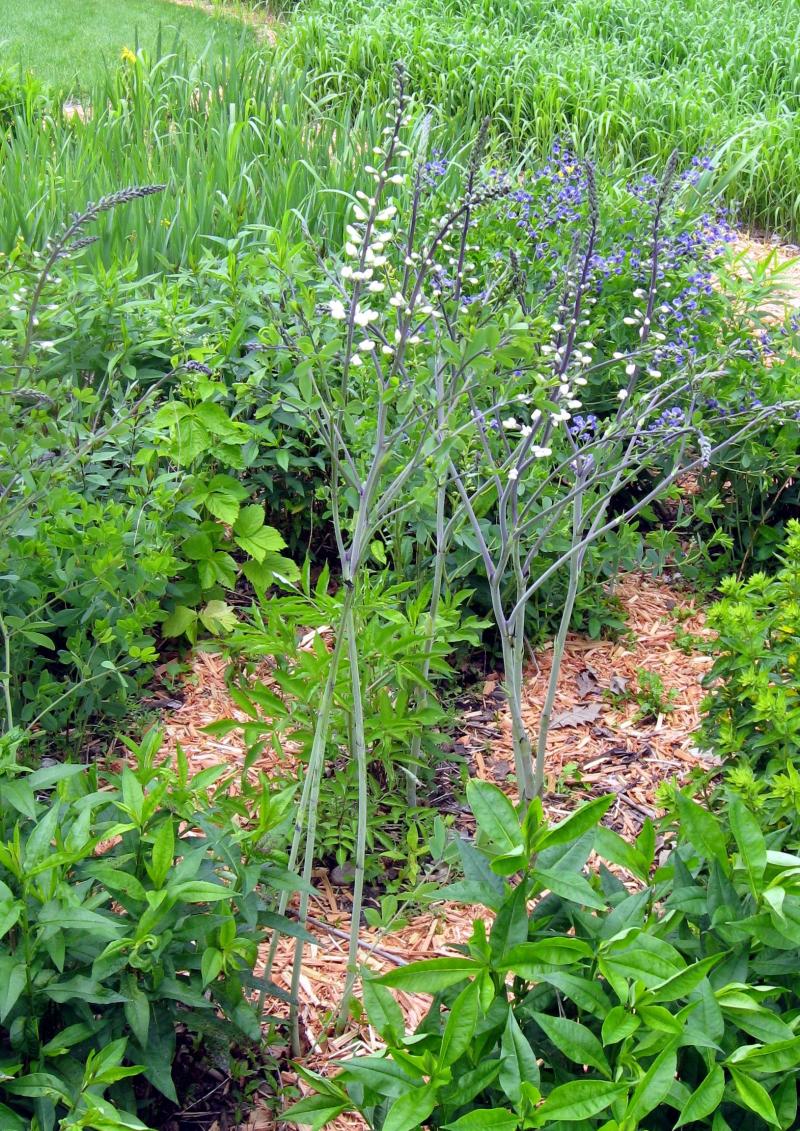
The plant for this week is Baptisia a.k.a. “false indigo”, “white indigo” and “yellow indigo”. This is a hardy perennial for the Northern Great Plains that is easy to grow, has multiple seasons of interest and lives for many years. They are actually native to the US but usually are found in somewhat warmer climates. Baptisias have been around for a long time but there has been renewed interest in them with the release of a number of new cultivars that offer a wider variety of flower colors and an improved plant growth habit. Baptisias should be planted in a full-sun location and given room to grow since plants can reach 3’ to 4’ tall and wide.

Spring is one of my favorite times when it comes to Baptisia because the young shoots emerge and grow up very quickly, almost like asparagus. The young stems may be light to dark green with some tinged in purplish-black. Spring is also the time that most of them will bloom, ranging in color from blue, white to yellow along with some of the newer hybrids that offer a bit more variety in flower color. Since these plants are in the same family as beans and peas, the flowers look similar. The flower stems gently arch over the plant with each bearing several flowers. After the flowers fade, the fruit begins to develop. They look like plump pea pods that start out green but generally turn nearly black by the fall. Baptisias are fun in the fall since the fruit of most of them become little rattles as the fruit ripens, releasing the small seeds inside.

Most of the Baptisias have light, blue-green stems and leaves that are usually with three leaflets each. The leaves and stems are very smooth and sometimes have a waxy bloom covering them. In some species, particularly Baptisia alba and B. leucantha, the lower portion of the stems are leafless giving the plants somewhat of a tree-like appearance with the bare “trunks” and leafy branches above. The plants really look quite attractive all through the season with the flowers and fruit as an extra bonus. However, young plants that you might find in a garden center may not look as appealing as they will after a few years of growing in your garden, so some gardeners might pass them by and purchase plants that look flashier in their nursery pot. I would encourage you to take some home anyway; I think you will be happy you did!


